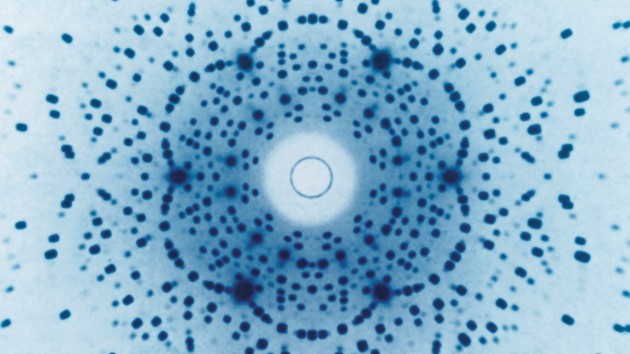Insight |
Collections
Filters
-
Collection Type
-
-
Collection |
 Electrocatalysis for fuels
Electrocatalysis for fuels
Efficient redox catalysis offers an important avenue in using renewable energy to process fuels. To this end, efforts in homogeneous, heterogeneous and microbial catalysis may each advance our fundamental understanding and technological capabilities.
Image: David Schilter/Rachael Tremlett -
-
-
-
-
Focus |
Quantum dot solids
Colloidal quantum dots are often referred to as artificial atoms, primarily because of their atom-like electron energy spectrum. Like atoms, they can form ordered structures that are commonly referred to as quantum dot solids. In this focus we provide an overview of the electronic properties of quantum dot solids. In particular, we explore the developments that have led to the observation of high electron mobility, and the challenges and opportunities for the incorporation of quantum dot solids in optoelectronic devices.
-
Focus |
Spin-transfer-torque memory
Non-volatile memories that are faster, cheaper and less power-hungry than existing solutions might be built by using solid-state devices in which information is stored and read electrically rather than by magnetic fields. Spin-transfer-torque magnetic random access memory (STT-MRAM) — the most advanced of these emerging technologies for solid-state non-volatile memory — is about to hit the market. This Nature Nanotechnology focus overviews the prospects and remaining challenges that STT-MRAM and competing emerging technologies face in terms of mass-market commercialization.Produced with support from Spin Transfer Technologies
-
Focus |
Plasmonics applications
The field of plasmonics and metamaterials has attracted a great deal of interest over the past two decades, but despite the many fundamental breakthroughs and exciting science it has produced, it is yet to deliver on the applications that were initially targeted as most promising. This focus examines the primary fundamental hurdles in the physics of plasmons that have been hampering practical applications and highlights some of the promising areas in which the field of plasmonics and metamaterials can realistically deliver.
-
Focus |
Graphene applications
As a result of significant scientific and technological progress over the past ten years, the commercialization of products based on graphene and related two-dimensional materials is within reach in a range of areas, from consumer electronics to energy storage. This focus reviews the fundamental properties of graphene that are relevant to electronic and other applications, and discusses the opportunities and challenges of commercializing graphene technologies.
-
Focus |
Performance of photovoltaics
While power generation using silicon solar panels has steadily been increasing over the years, alternative materials that could compete with this technology in terms of efficiency and module costs are intensely being investigated. Yet, to allow for a fair assessment of new photovoltaic technologies, characterization of light-conversion performance should be conducted according to commonly agreed basic rules. This joint web focus collects a series of opinion pieces, recently published in Nature Materials,Nature NanotechnologyandNature Photonics, that discuss the importance of reporting accurate device performance.
-
Milestone |
 Milestones in Crystallography
Milestones in Crystallography
Nature Milestones in Crystallography, a collaborative effort between Nature, Nature Materials, Nature Nanotechnology and Nature Structural & Molecular Biology, is the eleventh supplement in the series and is timed to coincide with the celebration of the 2014 International Year of Crystallography.

 Clean Water
Clean Water
 Environmental assessment
Environmental assessment
 Ten years of Nature Nanotechnology
Ten years of Nature Nanotechnology
 Advanced nanopores
Advanced nanopores
 Metamaterials for nano-optics
Metamaterials for nano-optics